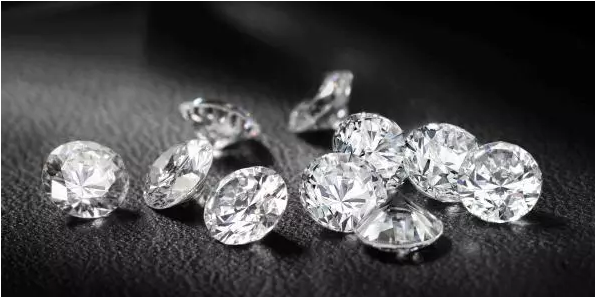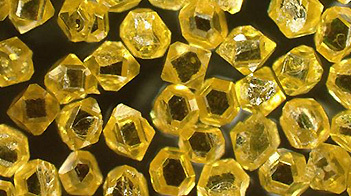Welcome to the official website of Henan Boyan New Materials Co., Ltd!

News Center
Research progress in diamond semiconductor devices
Release Time:
2025-07-14 11:19
Diamond can be used as an active device material to make FETs, power switches, etc., and can also be used as a passive device material to make Schottky diodes. Due to its high thermal conductivity and extremely high charge mobility, the semiconductor device can be applied to harsh environments such as high frequency, high power and high voltage, and has great application prospects. Foreign countries have also made some research progress in the production of diamond power electronic devices, and achieved some improvement in key performance indicators.
Japan
Japan has actively funded millions of dollars into the research field of diamond semiconductor devices since 2002 and has made some international leading progress.
In 2005, the diamond field effect transistor (FET) device developed by NTT Corporation of Japan had a linear gain of 10.94 d B at 1 GHz, a power added efficiency of 31.8%, and an output power density of 2.1 W/mm. The power density value is currently visible. The highest value reported. According to new reports, NTT has developed a 1 mm large gate width device at 1 GHz. The device output power is 1.26 W, the gain is 17 d B, and the power added efficiency is 56%. NTT's next goal is to develop diamond MESFETs (Metal Semiconductor Field Effect Transistors) with power densities greater than 30 W/mm and operating frequencies up to 200 GHz, which can operate in high temperature and harsh environments, truly replacing high-power electronics with solid-state electronics. Vacuum tube.
In 2014, Japan published a research report on IEEE, which uses NO2 adsorption and Al2O3 passivation to solve the thermal stability problem of the device. The RF power FET made of 100 nm gate length hydrogen end diamond, current Ids=1.35 A/mm , ft = 35 GHz, fmax = 70 GHz, gate length and gate width are 0.2 μm and 390 μm, respectively. The RF output power density is 2W/mm at 1 GHz, which enables stable operation at 200 °C.
In 2017, Japanese researchers homogenized a 500 nm diamond film on a (001) diamond substrate to form a normally-off CH diamond MOSFET (Metal Oxide Semiconductor Field Effect Transistor) with a 2 k V breakdown voltage, gate threshold voltage Vth It is 2.5 to 4 V.
United States
The preparation and application of electronic grade diamond grown by the American startup AKHAN Semiconductor Research Laboratory is reported to have been authorized by the US Department of Energy's Argonne National Laboratory for diamond semiconductor process, and combined with its own technological breakthrough in the diamond field, it is expected to become The world's first company to truly realize the commercialization of diamond semiconductor devices.
Akhan Semiconductor offers the "Miraj Diamond Platform" as a solution for P-type and N-type devices, making it possible to manufacture diamond-complementary metal oxide semiconductors (CMOS). The technical core of the process platform is that the P-type device is doped with phosphorus (P), and the N-type device is doped with barium (Ba) and lithium (Li). Electronic devices, and thus developed diamond CMOS. In addition, the diamond glass used in AKHAN for display and camera lenses has 6 times and 10 times the strength and hardness of gorilla glass, respectively.
AKHAN's first diamond CMOS process produces a diamond PIN diode with a thickness of only 500 nm, which is 10 times thinner than silicon and 1 million times better than silicon. And there is no hot spot in the PIN diode, no parasitic loss, and the thermal performance is much better than the silicon PIN diode. AKHAN Semiconductor has a number of patents in diamond technology covering the basic materials of almost all semiconductor components, from diodes, transistors and power inverters to fully functional diamond chips such as integrated circuits. AKHAN Semiconductor also produced diamond electronics operating at 100 GHz with a feature size of 100 nm. Diamond has an ultra-low resistance, reduces heat dissipation requirements, and can be deposited on silicon, glass, sapphire and metal substrates, and is expected to re-energize the evolution of microprocessor speed.
Other research
An international research team composed of researchers from France, the United Kingdom, and Japan made new progress in diamond MOSFETs in 2017, developing a new method for introducing deep depletion regions in boron-doped diamond MOSFETs, and building a new concept for diamond MOSFETs.

When building the MOSFET, the researchers first deposited a layer of aluminum oxide (Al2O3) over the oxygen-terminated diamond epitaxial layer at 380 °C, and then boron-doped the diamond layer to form a stable depletion region. The bulk diamond epitaxial layer is functionally equivalent to a thick hole carrier channel, and by applying a voltage to the gate, it can repel and deplete the hole carriers in the deep depletion region, thereby controlling The transistor is turned on and off. The proposed operation mode of the new transistor makes the structure of the diamond MOSFET simpler and reduces the manufacturing difficulty. Experimental results show that the new method can increase the carrier mobility of wide bandgap semiconductors by an order of magnitude. Subsequently, the researchers will conduct trial production of a deep depleted oxygen terminated diamond MOSFET.
In fact, there are more than a dozen teams in China who have been engaged in the research of diamond semiconductor materials and devices, mainly the Institute of Semiconductors of the Chinese Academy of Sciences, the Institute of Metals of the Chinese Academy of Sciences, Xi'an Jiaotong University, Xi'an University of Electronic Science and Technology, Jilin University, Zhengzhou University, Shandong University, Zhejiang University of Technology. , Shanghai University, Wuhan Engineering University, etc., and made progress in the field of blind UV detectors.
Development outlook
With the continuous development of diamond semiconductor technology, the future will break through the bottleneck problems of n-type doping technology, large-size high-quality single crystal preparation and high flatness, high uniformity material epitaxy technology, and achieve higher power performance of diamond electronic devices. . Diamond semiconductor devices are thinner than silicon chips, and diamond-based electronics are likely to become the industry standard for energy-efficient electronic products, which will have a significant impact on some high-tech industries, including faster supercomputers, advanced radar and telecommunications systems, and ultra-efficient Hybrid vehicles, electronics in extreme environments, and next-generation aerospace electronics.
The main content comes from research and compilation, and is for reference only.
Diamond has a wide range of applications in high-end manufacturing such as precision tools, wear parts, optical component coatings, and electronic component processing. In addition, single crystal diamond is not only "industrial teeth", but also "ultimate semiconductors". The third generation of wide bandgap semiconductors and devices represented by diamonds are the basis for future integrated circuits, the development of information age, in biological detection and medical, flat panel display. Many high-tech fields such as environmental protection engineering and functional devices have great application potential.
Based on this, the 4th International Carbon Materials Conference focuses on diamond modules. In addition to focusing on diamond synthesis technology, doping technology, and product production, it will also focus on high-end manufacturing and cutting-edge high-tech research. We invite experts, scholars and business representatives from the industry to discuss new technologies, new breakthroughs and new developments, and open a new era of ultra-hard materials to the high-end applications.
diamond,the,and,of,in,to,is,semiconductor,power








